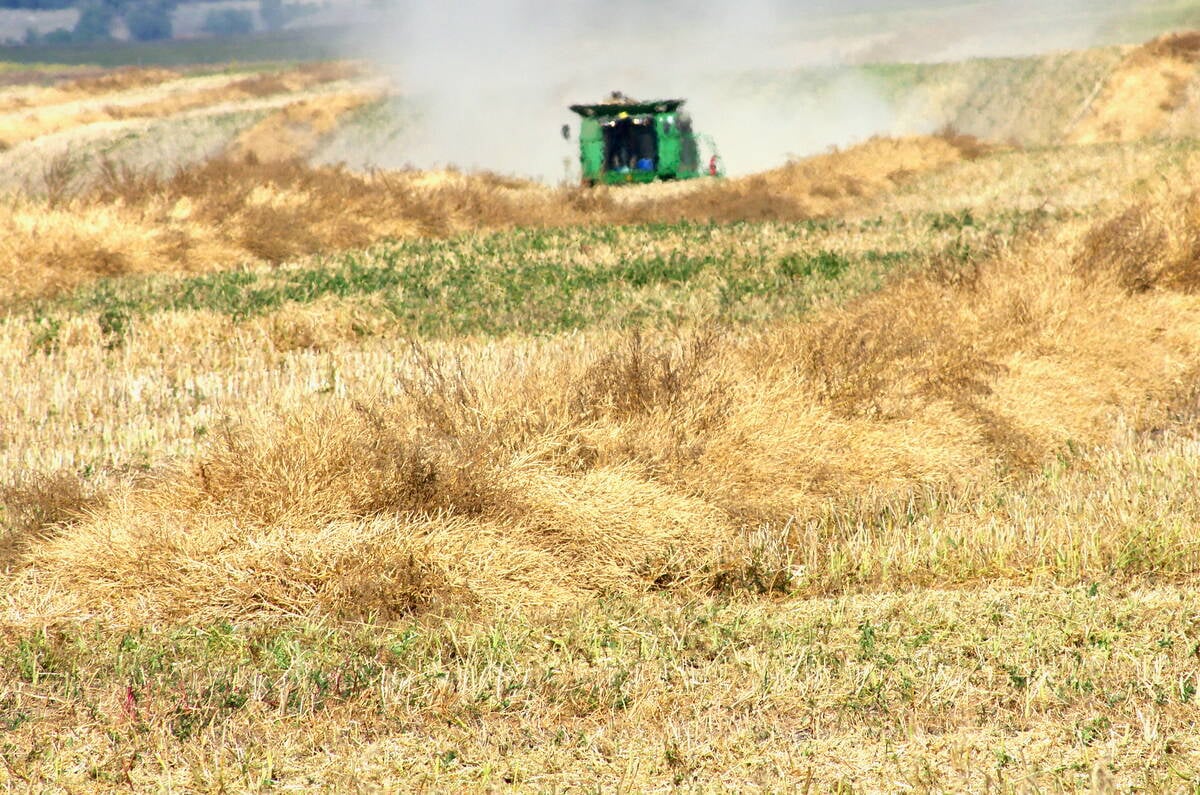There continues to be wild volatility in the market, but new crop and old crop wheat prices are remarkably similar in the Canadian Wheat Board’s first Pool Return Outlook for 2011-12.
Most wheat grades and classes are slightly higher for 2011-12, but durum and malting barley are much higher, satisfying farmer hopes to see the good world prices they have heard are in the market.
No. 1 Canada Western red spring wheat 13.5 percent protein is forecast at $9.58 per bushel at port in 2011-12, little changed from the latest 2010-11 PRO of $9.61.
Read Also

Manitoba searches for Plan B on canola oil exports
A new report explores Manitoba’s current canola oil trade and possible alternative markets to the U.S.
No. 1 CWRS 11.5 percent protein is $8.74 per bu., up from the 2010-11 PRO of $8.44.
This assumes a return to a normal grade pattern after weather downgraded last season’s crop.
Durum prices are much higher, however: $10.18 per bu. for No. 1 Canada Western Amber Durum 13 percent protein for 2011-12 compared to 2010-11 prices of $8.46.
Malting barley prices are also much higher for 2011-12 compared to 2010-11, with an increase of $1.83 to $7.34 per bu. for two-row and $6.97 for six-row.
CWB market analyst Neil Townsend said volatile grain markets mean the final pool prices will likely be different from the first PRO prices.
However, farmers need to be given some sign of how prices will fare.
The crop has not yet been planted and will be marketed well into 2012.
“It’s a long time, but you’ve got to put a number out there,” Townsend told reporters after unveiling the new PRO at the GrainWorld Conference in Winnipeg on Feb. 28.
“I feel good with the PRO. It’s a strong reflection of where the futures markets are, a strong reflection of where we think the basis might go, and it’s got all the available information in it.”
Greg Donahue of Biggar, Sask., said in an interview during the conference that the wild variations in market prices since 2006 have left him and many farmers unsure of what price range to expect.
“It’s difficult to make a projection,” said Donahue.
“You try to pick commodities that look good. It’s tricky with the ups and downs. It’s hard to manage the cash flow. It’s a long time from now until you get to sell the crop.”
Townsend said much of the wheat market outlook relies on northern hemisphere production this summer, as well as outside factors.
But the middle scenario he presented, between an outright bullish scenario and an outright bearish scenario, was “somewhat bullish,” with prices rising with world wheat production sitting below consumption and stocks becoming tighter.
He also said wild cards such as political unrest in the Middle East and world oil prices can have a major impact on all commodity prices, including grain.
Corn is the biggest bullish under-p inning of the grain market, Townsend said. It has low stocks that aren’t expected to grow, even with a good U.S. crop this summer.
The battle for acres that is expected to increase corn production this spring will probably lead to corn prices peaking in the spring seeding period.
Townsend also discussed the similarities of 2011-12 to 2006-07 and 2007-08. If the situation is similar to 2007-08, the wheat market will probably peak within the next four weeks.
However, if it’s more like 2006-07, then the market is just building a base and the peaks could be much higher and months in the future.















